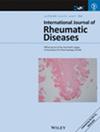Exploration and Identification of Potential Biomarkers and Immune Cell Infiltration Analysis in Synovial Tissue of Rheumatoid Arthritis
Abstract
Introduction
Rheumatoid arthritis (RA) is a prevalent autoimmune disease with synovial inflammation and hyperplasia, which can potentially cause degradation of articular cartilage, ultimately causing joint deformity, and impaired function. However, exact mechanisms underlying RA remain incompletely understood. This study seeks to uncover genomic signatures and potential biomarkers of RA, along with exploring the biological processes involved.
Methods
Six microarray datasets from RA patients, osteoarthritis (OA) and healthy controls (HC) of synovial tissue were obtained from the Gene Expression Omnibus (GEO) database for integrated analysis. Differentially expressed genes (DEGs) between groups were identified by “limma” package. The gene ontology (GO) and Kyoto Encyclopedia of Genes and Genomes (KEGG) pathway enrichment analyses were carried out. Protein–protein interaction (PPI) network was analyzed by STRING and presented by Cytoscape. Weighted gene co-expression network analysis (WGCNA) was conducted to discover and construct the co-expression gene modules correlated with clinical phenotype. CytoHubba and MCODE were utilized for screening hub genes. Additionally, immune cell infiltration analysis was conducted utilizing CIBERSORT algorithm. The correlation of hub genes with immune cells were examined through Pearson Correlation Analysis.
Results
The overlapped 92 up-regulated genes were determined between RA versus normal controls and RA versus OA, which were primarily enriched in immune response, lymphocyte activation, and chemokine signaling pathway. By integrating WGCNA, Cytohubba and MCODE algorithms, 16 hub genes were identified including CXCL13, ITK, CXCL9, CCR5, CCR7, NKG7, CCR7, and CD52. We validated the diagnostic significance of these markers in RA by qRT-PCR. Moreover, the analysis of immune cell infiltration demonstrated a positive association between these hub genes with B cell naïve, plasma cell, T cells follicular helper, and macrophages M1. The abundance of these cells was markedly greater in RA compared to OA and normal controls.
Conclusion
This research ultimately identified 5 potential diagnostic biomarkers of RA in the synovial tissue, namely NKG7, CD52, ITK, CXCL9, and GZMA. These findings have enhanced our comprehension of RA pathogenesis and identified promising diagnostic and therapeutic targets of RA.

 求助内容:
求助内容: 应助结果提醒方式:
应助结果提醒方式:


